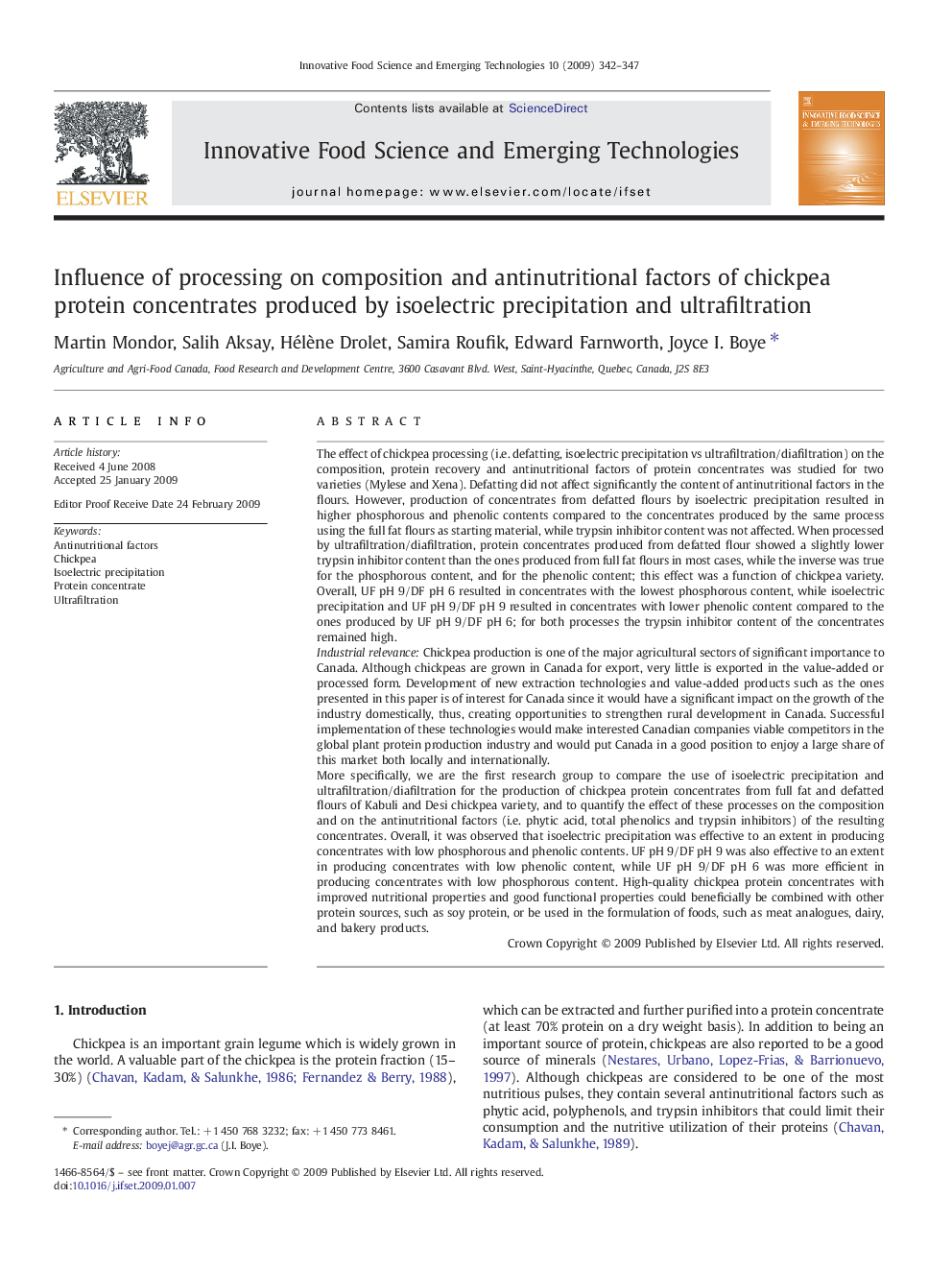| کد مقاله | کد نشریه | سال انتشار | مقاله انگلیسی | نسخه تمام متن |
|---|---|---|---|---|
| 2087196 | 1080631 | 2009 | 6 صفحه PDF | دانلود رایگان |

The effect of chickpea processing (i.e. defatting, isoelectric precipitation vs ultrafiltration/diafiltration) on the composition, protein recovery and antinutritional factors of protein concentrates was studied for two varieties (Mylese and Xena). Defatting did not affect significantly the content of antinutritional factors in the flours. However, production of concentrates from defatted flours by isoelectric precipitation resulted in higher phosphorous and phenolic contents compared to the concentrates produced by the same process using the full fat flours as starting material, while trypsin inhibitor content was not affected. When processed by ultrafiltration/diafiltration, protein concentrates produced from defatted flour showed a slightly lower trypsin inhibitor content than the ones produced from full fat flours in most cases, while the inverse was true for the phosphorous content, and for the phenolic content; this effect was a function of chickpea variety. Overall, UF pH 9/DF pH 6 resulted in concentrates with the lowest phosphorous content, while isoelectric precipitation and UF pH 9/DF pH 9 resulted in concentrates with lower phenolic content compared to the ones produced by UF pH 9/DF pH 6; for both processes the trypsin inhibitor content of the concentrates remained high.Industrial relevanceChickpea production is one of the major agricultural sectors of significant importance to Canada. Although chickpeas are grown in Canada for export, very little is exported in the value-added or processed form. Development of new extraction technologies and value-added products such as the ones presented in this paper is of interest for Canada since it would have a significant impact on the growth of the industry domestically, thus, creating opportunities to strengthen rural development in Canada. Successful implementation of these technologies would make interested Canadian companies viable competitors in the global plant protein production industry and would put Canada in a good position to enjoy a large share of this market both locally and internationally.More specifically, we are the first research group to compare the use of isoelectric precipitation and ultrafiltration/diafiltration for the production of chickpea protein concentrates from full fat and defatted flours of Kabuli and Desi chickpea variety, and to quantify the effect of these processes on the composition and on the antinutritional factors (i.e. phytic acid, total phenolics and trypsin inhibitors) of the resulting concentrates. Overall, it was observed that isoelectric precipitation was effective to an extent in producing concentrates with low phosphorous and phenolic contents. UF pH 9/DF pH 9 was also effective to an extent in producing concentrates with low phenolic content, while UF pH 9/DF pH 6 was more efficient in producing concentrates with low phosphorous content. High-quality chickpea protein concentrates with improved nutritional properties and good functional properties could beneficially be combined with other protein sources, such as soy protein, or be used in the formulation of foods, such as meat analogues, dairy, and bakery products.
Journal: Innovative Food Science & Emerging Technologies - Volume 10, Issue 3, July 2009, Pages 342–347